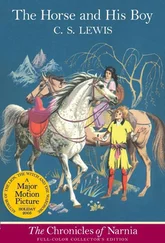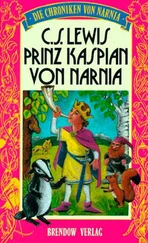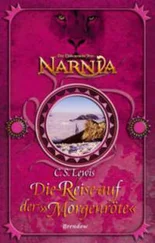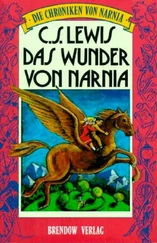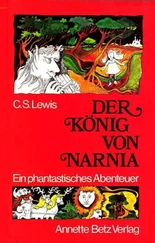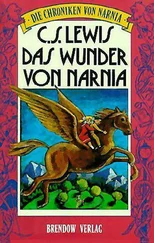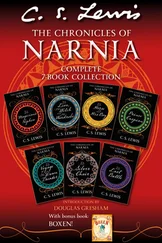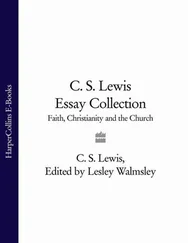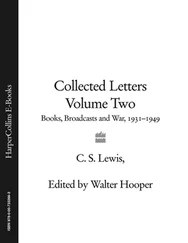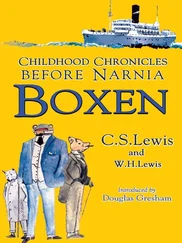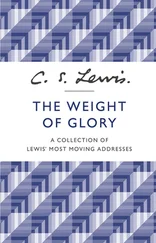265‘without trace’.
266Priscilla was Tolkien’s daughter.
267Katharine Farrer had been corresponding with Tolkien about The Lord of the Rings .
268MacDonald, Diary of an Old Soul , November 3: ‘Have pity on us for the look of things,/Where blank denial stares us in the face./Although the serpent mask have lied before/It fascinates the bird.’
269Matthew 27:46; Mark 15:34.
270Romans 12:5.
271Mrs Van Deusen may have suggested sending Lewis the autobiography of the American political writer Whittaker Chambers (1901-61), best known for his accusation and testimony against Alger Hiss (1904-96), the architect of the Yalta Conference and Secretary General of the San Francisco conference that created the United Nations. Chambers’ autobiography, Witness , was published in 1952.
272Blamires had applied for a job in Edinburgh.
273The US edition of Mere Christianity was published by Macmillan of New York on 11 November 1952.
274 The Voyage of the ‘Dawn Treader’ .
275During the autumn of 1952 the Church Times featured a number of pencil drawings of ‘Portraits of Personalities’; that of Lewis, by Stanley Parker, appeared in the Church Times , CXXXV (21 November 1952), p. 844.
276This was possibly the working title for an intended collection of Lewis’s essays.
277Serena is a young lady whose adventures are recounted in Spenser, The Faerie Queene , Book VI.
278The Red Cross Knight.
279Spenser, The Faerie Queene , I, x, 61, 8: ‘Thou Saint George shalt called bee.’
280There is no evidence that this story was ever published.
281H. G. Wells, Kipps (1905).
282e.g. H. G. Wells, The War of the Worlds (1898), ch. 6: ‘You may figure to yourself the hum of voices along the road in the gloaming.’
283 Christian Behaviour (New York: Macmillan, 1943).
284‘Luke 11:26: the last state of that man is worse than the first’ Matthew 12:45.
*There are v. important exceptions. Also, on further thought, I don’t believe much in ‘French, American, or English people.’ There are only individuals really.
285i.e., Joy Gresham.
286For a while Joy and Bill Gresham dabbled in Ron Hubbard’s philosophy of Dianetics or spiritual healing. See Lyle Dorsett, And God Came In: The Extraordinary Story of Joy Davidman, Her Life and Marriage to C. S. Lewis (New York: Macmillan, 1983), ch. 3, p. 71.
287See the biography of the Honourable Phyllis Elinor Sandeman (1895-1986) in CL II, p. 788n. Mrs Sandeman was brought up in Lyme Park, one of the most magnificent houses in Cheshire. Home to the Legh family for 600 years, the original Tudor house was transformed by the Venetian architect, Giacomo Leoni, into an Italianate palace. In 1946 Mrs Sandeman’s brother, the 3rd Baron Newton, Richard Legh, gave Lyme Park to the National Trust.
296Lewis had put his finger on ‘Mrs’ while the ink was still wet.
288Phyllis Sandeman, Treasure on Earth: A Country House at Christmas , illustrated by the author (London: Herbert Jenkins, 1952), an account of a Christmas spent at Lyme Park during her childhood.
289Percy Lubbock, Earlham (1922).
290‘we others’.
291Alfred, Lord Tennyson, The Lady of Shalott, And Other Poems (1833), ‘The Lotus Eaters’, IV, 8-9: ‘All things are taken from us, and become/Portions and parcels of the dreadful Past.’
292Sandeman, Treasure on Earth , p. 26: ‘It was a large lofty room with walls of darkly gloomy cedar-wood, Corinthian pilasters arranged in pairs dividing the long panels and each of these adorned down its centre with swags of elaborate wood-carvings. From looped garlands and palm leaves and cupids’ heads hung a host of diverse objects, bunches of fruit and flowers, musical instruments, trophies, fish and birds, all carved to the life in soft yellow pear-wood by the hand of the master—the one and only Grinling Gibbons.’ In Mrs Sandeman’s book the owners of the house–the Newtons–are given the pseudonym ‘Vayne’. Grinling Gibbons (1648-1721) was the most famous English woodcarver of all time.
293ibid., p. 62: ‘They would begin with Grace said by the Canon and then the meal would proceed eaten off silver plates, not so pleasant as the china service because scratchy under the knife and fork.’
294ibid., p. 83: ‘The Long Gallery…could be a little frightening at night, and generally Phyllis avoided going there alone after dark. One night after summer holidays, however, resentful and unhappy from what she considered an unjust rebuke by her parents, she had run there, and flinging herself on one of the deep window seats, burst into tears of self-pity But almost at once, breaking in upon her grief with a gentle but increasing pressure, she seemed to detect a sympathy in the surrounding atmosphere as if unseen presences thronging about her were offering their love and consolation.’
295Charlotte Brontë, Jane Eyre (1847), ch. 2.
297Genesis 15:1; Luke 2:10.
298 The Ichneutai of Sophocles: The Searching Satyrs, the Fragment Freely Translated into English Rhyming Verse and Restored by Roger Lancelyn Green (Leicester: E. Ward, 1946).
299Lewis had sent Evans a copy of Prince Caspian , and he was here referring to the first illustration in Chapter 3. Pauline Baynes wrote to Walter Hooper on 15 August 1967: ‘[Lewis] only once asked for an alteration–& then with many apologies—when I (with my little knowledge) had drawn one of the characters rowing a boat facing the wrong direction’ (CL II, p. 1020).
300Having returned to New Zealand, Bodle sent Lewis a little book of prayers for deaf children that she had written.
301John 14:9.
302John 14:28.
303Acts 17:27.
304See Clyde S. Kilbyin the Biographical Appendix.
305Laurence was the second son of Cecil Harwood and Lewis’s godson. See Laurence Harwoodin the Biographical Appendix to CL II, pp. 1051-2.
306At this time Vera Henry was back in her native Ireland. She never recovered from her illness and died in April 1953. The only person at The Kilns who could help with the cooking was the gardener, Fred Paxford (see his biography in CL II, p. 213n). When it was clear that Vera would not be returning, Lewis hired as his housekeeper Mrs Molly Miller, who lived close by in Kiln Lane. There are photographs of Fred Paxford and Molly Miller in Douglas Gilbert and Clyde S. Kilby, C. S. Lewis: Images of His World (Grand Rapids: Eerdmans, 1973), pp. 67, 69.
307‘Not to us.’ Psalm 115 (Vulgate): ‘Non nobis, Domine, non nobis; Sed nomini tuo da gloriam’: ‘Not to us, O Lord, not to us, but to your Name give glory.’
308It is known Joy Gresham left for the United States on 3 January 1953.
309Bonamy Dobrée (1891-1974) was born in London on 2 February 1891 and educated at Haileybury College and the Royal Military Academy at Woolwich. He served with the Royal Horse Artillery and Royal Field Artillery during the First World War. After the war he went to Christ’s College, Cambridge (1920-1). In the following years he published many scholarly books. In 1936 he was appointed to the Chair of English Literature at the University of Leeds, where he remained until his retirement in 1955. Dobrée was one of the General Editors of the Oxford History of English Literature, and his contribution to the series was English Literature in the Eighteenth Century, 1700-1740 (1959). He died on 3 September 1974.
310 The Wanderer is an Anglo-Saxon poem of 115 lines. This is Lewis’s translation of lines 9-14.
311Lewis probably meant by this ‘A Normal Male Person’.
Читать дальше

